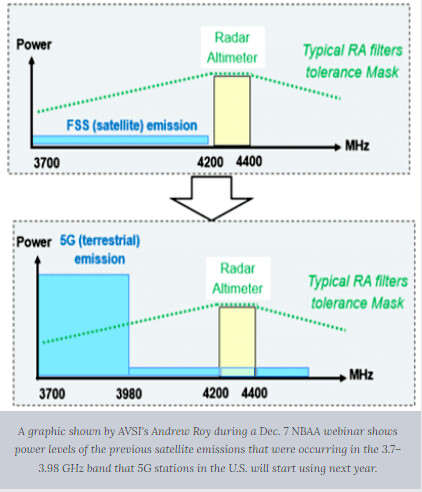You say just assume you’re getting the entire power of the base station,
No, I said assume it’s operating at maximum power, not that all power arrives at the receiving antenna.
OK, that’s what I mean by infinite gain. The higher gain an antenna is, the more directional it is. If it’s delivering all its power to a point it’s infinite.
OK, I see, that’s fine. Thanks. Nit: seems backward in that the directionality is what can be changed and so determines the gain.
At any point an aircraft can be hit with the entire power of a base station. Obviously that’s not the case but how else could they plan for it if the carriers and the FCC aren’t willing to let them know what the details of the actual beamforming is.
Well they actually did do a version of the procedure we’re talking about! And even though they don’t say what assumptions they made, it looks like there is a problem. This graph is from the article you posted:

If they know the beamforming details they can set regulations around the placement of these stations near airports and design whatever filters they need to based on the distances that are set by regulations and the power you’d see at that distance and gain.
Now that I have a clearer idea of the problem that does seem like a reasonable request but even then they really only need a bound on a parameter, not an exact value.
Again, this seems like turf war stuff. Else this would have been resolved years ago. As mentioned in the article, several previous FCC commissioners, along with the current person, claim it was resolved in a process that included the FAA.
And why is this being brought up now and why in this manner? Either the process was corrupt and the FAA is desperate to correct it before there are tragic consequences, or it’s the FAA/industry that are strongarming everyone else for some questionable reason.
Edit: when I say it looks like there is a problem based on the graph, I mean absent any filtering.
